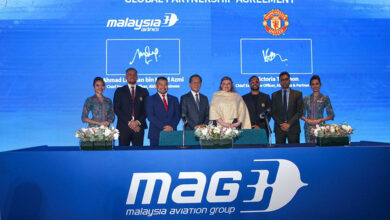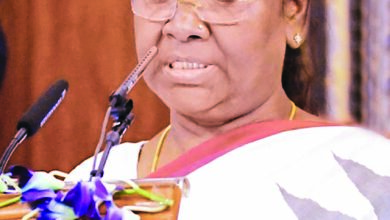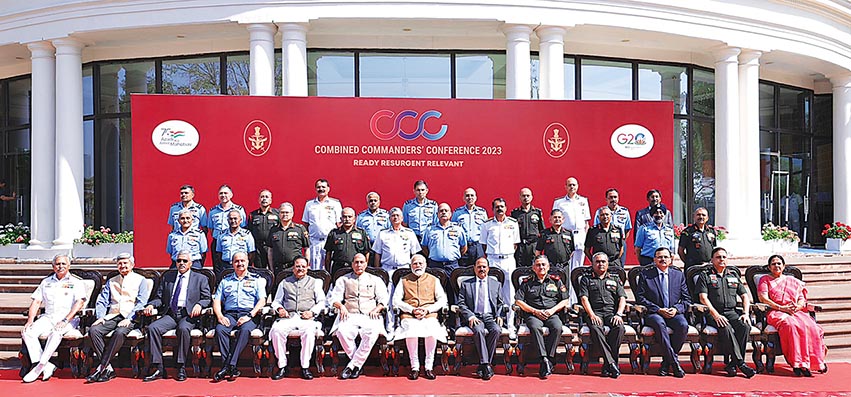New Civil Aviation Policy Aims to be Liberal and Growth-Oriented
By Sushma Ramachandran
NEW DELHI. India may finally have a new civil aviation policy after two decades if the plans announced recently are actually implemented over the next few months. The mandate given by Prime Minister Narendra Modi for the new policy was to ensure that the common man can also start to travel by air.
Currently the country has a middle class that is 350 million strong and is travelling a great deal. Of these, however, only 70 million have the resources to soar into the skies to reach their destination. Besides, formal guidelines were essential in order to enable investors to have clarity before pouring funds into this critical infrastructure sector. According to Civil Aviation Minister Ashok Gajapathi Raju, the new policy is set to be unveiled at a time of some turbulence for the aviation industry, but it will trigger positive results as this is also a time of high growth and low oil prices. The turmoil is largely because of the entry of two big new players with foreign collaboration – Vistara, a joint venture of Singapore Airlines and the Tata group, and Air Asia, headed by the iconic Malaysian entrepreneur, Tony Fernandes.
Other older more entrenched domestic players have formed an organisation called the Federation of Indian Airlines (FIA) and have joined hands to protest the perceived privileges being given to the new kids on the block. This is specifically in relation to the 5/20 rules which had been applied to all domestic airlines till now. This decade-old rule mandated aviation companies to operate within the country for at least five years before launching international operations. In addition, they had to have a fleet of at least 20 aircraft to fly overseas. In the case of the two new entrants, it was reported that the government was thinking of allowing relaxation in the rules. Though domestic players had been lobbying for years to get rid of this regulation, they were annoyed that it had to be followed by them in the past but would not apply to the new entrants to the market. Clearly the government is in a bind at the moment as any change of rules would spark charges of favouritism and even crony capitalism especially in the wake of the Kingfisher fiasco.
The FIA has also appealed to the prime minister to review the rules regarding ownership and effective ownership of airlines. Though the rules allow only 49 per cent foreign share holding of airlines, the federation argues that effective control is actually with the foreign parent companies of these concerns.
According to the draft policy that has just been unveiled seeking comments from the public, development of regional connectivity is a critical requirement in the future. In addition, it highlights the need to waive taxes that make maintenance, repair and overhaul (MRO) more expensive to perform in India than abroad. Experts say that of the 700 million dollar MRO business, only 70 million dollars is carried out in India. Another feature of the draft policy is a proposal for a two per cent cess on all domestic main trunk flights as well as on international flights. The revenues collected will be used as a subsidy for airlines to bring down the cost of operating non-metro flights. The aim is to ensure that the cost of operating such flights is only `2500 per flying hour under the proposed new Regional Connectivity Scheme (RCS). It is envisaged that the total inflow due to the new fee will be about `1500 crore.
The policy also envisages development of around 350 unused airstrips to promote access to remote areas for regional connectivity. The plan is to develop no-frills airports so that airlines can offer cheap fares for one hour flights. A first step has already been announced in the 2016 budget proposals for revamping small and remote airports and air strips. Civil Aviation Ministry officials though maintain that the central and state governments will have to take a haircut and incentivise airlines to fly to smaller and remote airports. Possible actions could include waivers of landing and parking charges and taxes on tickets in order to make flying affordable.
The government is also examining the possibility of liberalising the bilateral regime by permitting open skies between India and SAARC countries as well as countries beyond a 5000 km radius from Delhi. After 2020, it is planned to consider an open skies regime with other countries and also to revisit the 49 per cent cap on foreign equity for the airlines sector. The draft policy proposes to abolish service tax on MRO services provided in India and allows increase in tax-free period for storage of spares imported by MROs. The ultimate goal is to make this country a hub for MRO services in Asia. The aviation ministry will also try to persuade states to eliminate the value added tax on MRO activity.
In addition, the draft policy proposes viability gap funding (VGF) for airlines travelling to underserved and unserved destinations to keep air fares at about `2500 per flying hours for regional routes. The VGF will be indexed to aviation turbine fuel and inflation. The centre will provide 80 per cent of the resources to bridge the losses of airlines operating these routes, but the remainder would have to be provided by the states. Service tax will also be waived on these routes.
The draft policy proposes a model to auction bilateral air traffic rights to countries within 5000 km radius of Delhi. Where domestic airlines have not fully utilised their quotas, additional seats would be allotted by bidding for a three year period. The proceeds of the auction would also be used to fund regional flying in the country.
The proposed subsidies will however be only offered to states which reduce VAT on ATF to one per cent or less at RCS airports. Officials point out that states are currently not collecting any tax at RCS airports as there are hardly any flights. If they reduce VAT on ATF at these airports, they would be encouraging connectivity and earning some revenue also. The push for regional air travel is expected to domestic air travel to 300 million by 2020 as against 70 million currently. Domestic air ticketing is expected to go up further to 500 million by 2027.
This is a brave new world being drawn up by the Civil Aviation Ministry. Whether all these grand plans will actually transform the industry has yet to be seen. Even more importantly, the big question is: will it become possible for the common man to go by air as easily and cheaply as by rail or road. This will depend on how sincerely this policy is finally implemented on the ground.
– The author is a distinguished commentator on economy.





